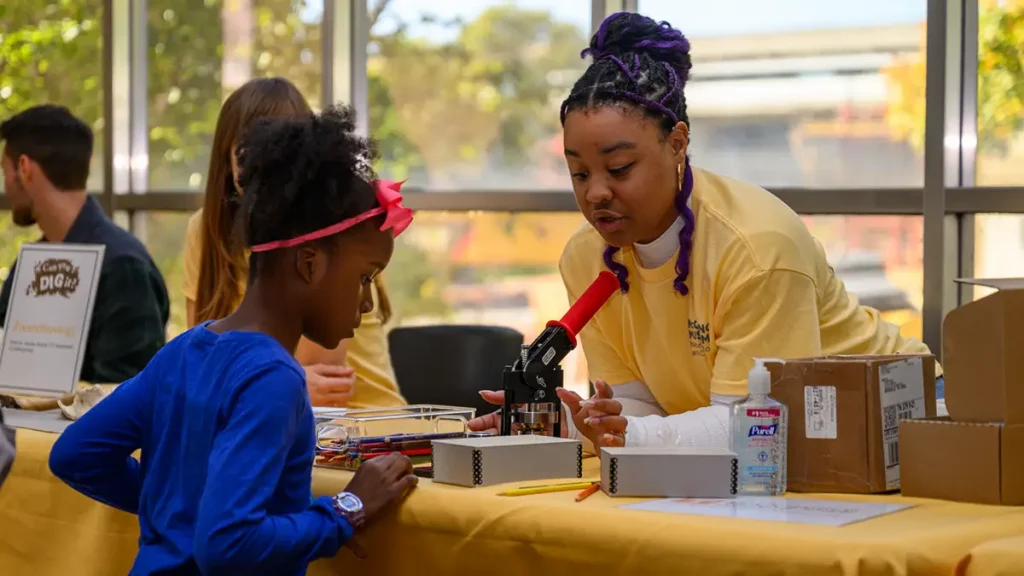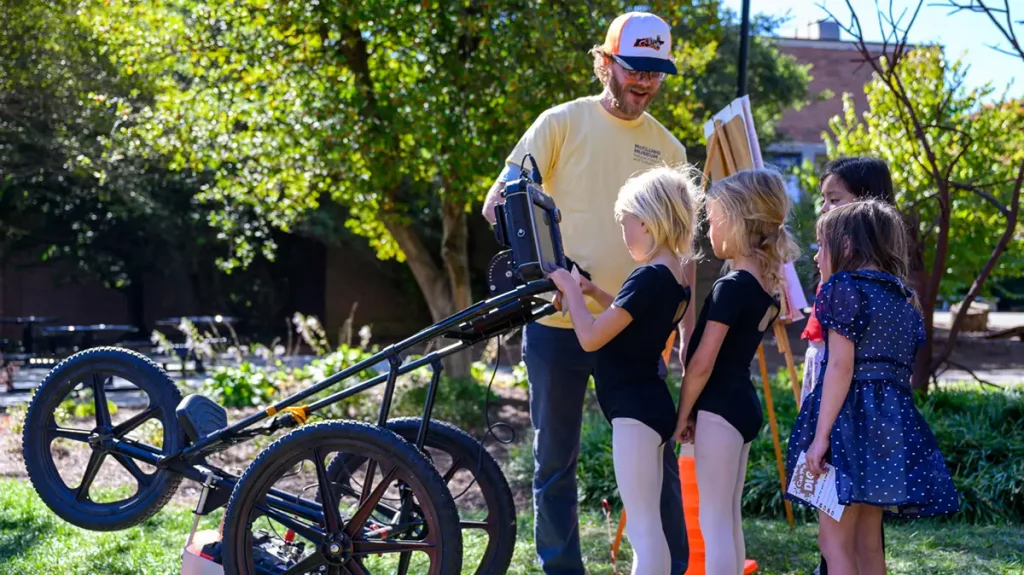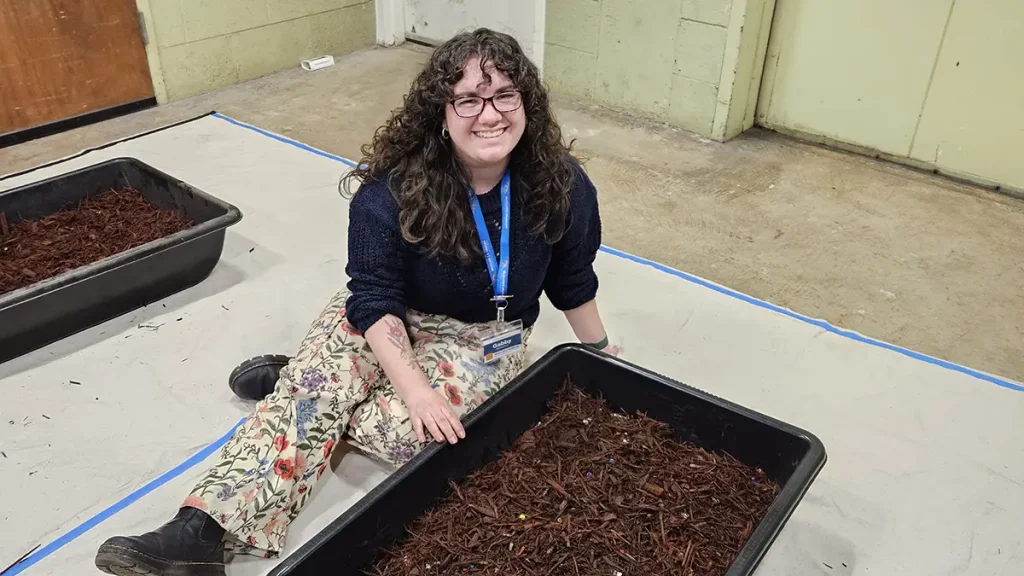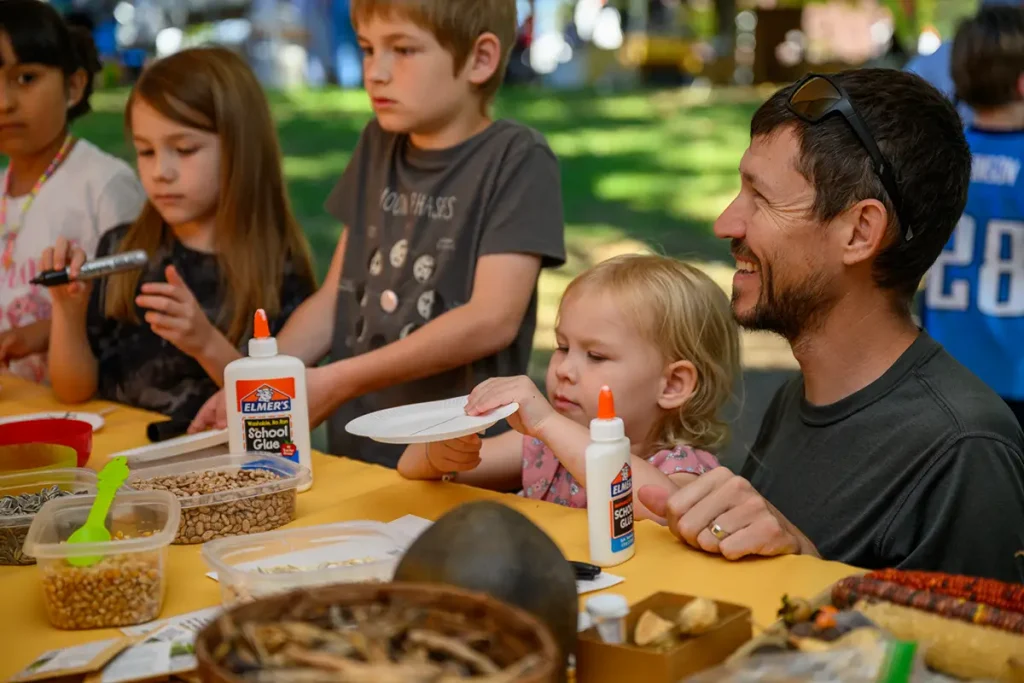Arts and Sciences Volunteers Share Archaeology Day at McClung Museum



University of Tennessee students from multiple disciplines flexed their knowledge and skills with visitors from around the region during “Can You Dig It?” on October 20, a free, family friendly event celebrating International Archaeology Day at the McClung Museum of Natural History and Culture.
UT students and faculty worked one-on-one with visiting K–12 students and area families to explore archaeology through hands-on educational activities like cave art painting, hunter-gatherer games, and mock excavations. Vol participants represented multiple departments from the College of Arts and Sciences, including anthropology, classics, art, and religious studies.
“The participating students’ backgrounds are widely varied,” said Leslie Chang Jantz, curator of education for the McClung Museum. “We’re pulling Volunteers, not just from the individual departments with contributing presenters, but also students seeking experience on campus in engaging with the public, especially families.”
Interdisciplinary Connections
Sophomore Gabby Puckett embodies the interdisciplinary nature of students involved in “Can You Dig It?” She double-majors in anthropology and religious studies with minors in classical civilizations and Judaic studies. She is also a student Visitor Services associate, a former education intern for McClung, and is co-chair of the McClung Student Advisory Board.
“As I’m sure you can tell from that list, this event really brings together all of my many departments and positions,” said Puckett. “My multidisciplinary background allows me to connect to everyone involved on different levels.”
The day allows Puckett to share her own formative experiences with the next generation.
“I went to many science camps and paleontology camps, and that’s what sparked my love for this area of study,” said Puckett. “Being a part of this allows me to show off why the work that we do is important, and the different levels of nuance and complexity that accompany these fields.”
Puckett helped visiting families tailor the event to their area of archaeological interest, helping young students connect to the field. The day also gave her a unique opportunity to understand the work and research of faculty beyond the classroom.
“I love getting to see many of the students that I got to work with as an intern come back for these bigger events time and time again and enjoy it just as much as they did the first time,” said Puckett. “I get to see how they grow and the way these different events shape who they want to be when they grow up. When it comes to my studies, I will confidently say that at every single event like this I find a new rabbit hole to dive down and research even more—just adding to the possibilities of what I can do once I graduate.”
Building on History

Associate Professor Erin Darby, Department of Religious Studies, was inspired to initiate the Archaeology Day event after visiting a similar celebration at Cambridge University in 2012.
“Cambridge does Science Day, where they invite people on campus and all the different units have tables and engagement activities,” said Darby. “I came back from that thinking that it is such a phenomenal idea, and we could do something like that at UT.”
Around the same time, the Archeological Institute of America (AIA) began promoting the idea for International Archaeology Day, offering small grants for local chapters. Darby applied for the grant in her role as president of the East Tennessee Society of the AIA.
“We got the grant and the first year was super successful,” said Darby. “The families loved it; the kids especially were super engaged. A lot of the archeologists across the university, especially in arts and sciences, all pulled together. It became this really nice way of collaborating with colleagues across different departments.”
Regional Colleagues
The event also invites students from the East Tennessee State University anthropology club, Anthropos. These students created and presented the cave art simulation to illustrate how people of past and present are connected and displayed through artwork and shared symbology. These students make valuable connections while visiting Rocky Top.
“Our students enjoyed networking with potential employers from around the region, as well as connecting with UT professors that they may apply to work with in the future,” said ETSU Assistant Professor Lindsey Cochran. “Throughout the day, students took turns speaking with UT graduate students, professors, regional cultural resource management firms, and state archaeology officials, who graciously provided career advice and insights that will surely benefit these students for many years to come.”
McClung Museum
UT’s McClung Museum of Natural History and Culture features exhibits on natural history, archaeology, anthropology, decorative arts, and local history. Offering free admission, the museum serves as an educational space for both the university and the local community.
By Randall Brown